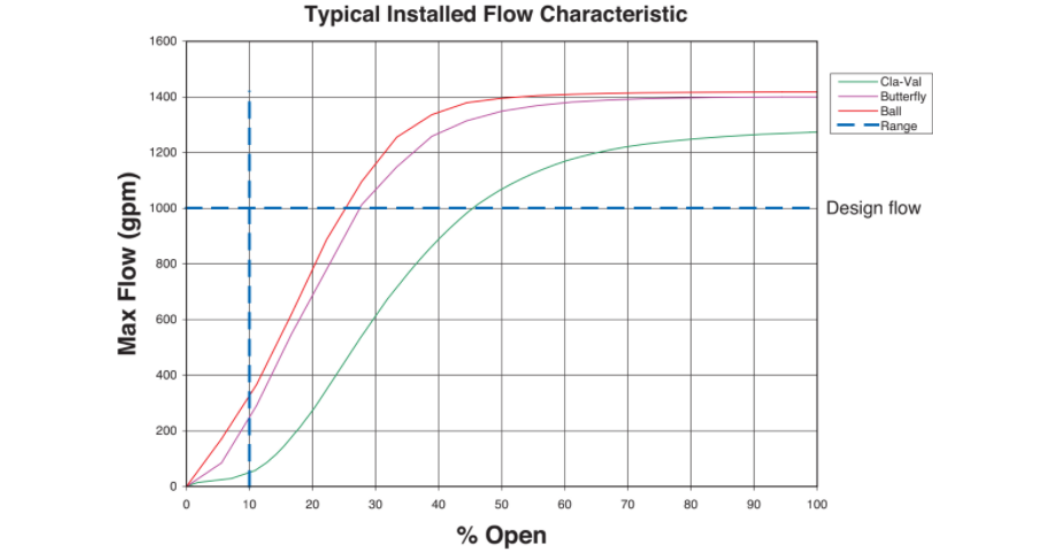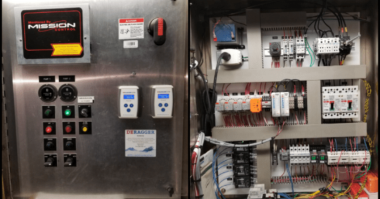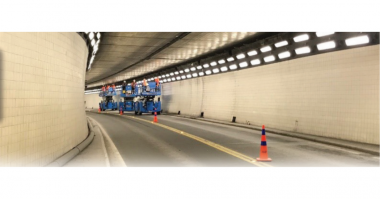The Foshan to Yunfu transfer park is a pilot industrial transfer park in Guandong province.
The planned total area is 39.6km2, it is located in the North of Duyang Town, Yuncheng District, Yunfu City on the southern bank of the Xijang River.
 Critical infrastructure for the project along with power supply, roading and sewerage is the supply of potable water and critical to the delivery of this is control of the pressure and flow.
Critical infrastructure for the project along with power supply, roading and sewerage is the supply of potable water and critical to the delivery of this is control of the pressure and flow.
Automatic Control Valves of significant advantages over other valve types for both flow and pressure control.
Top Twelve Reasons Why Cla-Val Automatic Control Valves are better than actuated butterfly and ball valves.
(1) Automatic Control Valves provide a greater range of control in modulating applications than actuated butterfly or ball valves do. In fact, butterfly valves and ball valves are essentially on-off valves with minimal modulating capabilities, whereas automatic control valves are ideally suited to modulating applications because they are more linear in the way they control flow. Completely open butterfly valves and ball valves are unparalleled when it comes to providing low head loss but in any other position, performance is greatly diminished.
(2) Automatic Control Valves can be positioned anywhere on the spectrum, from fully closed to fully open, and operate efficiently without creating the potential for damage, whereas, when a butterfly or ball valve is partially open, the disc and stem, or ball, respectively, impede flow — creating a potential for wear and damage of the internal components, especially in high flow applications.
(3) Butterfly and ball valves are much more susceptible to cavitation for the reasons stated above but neither valve
type can be modified to fight cavitation. The only choice for system designers and operators is to avoid using butterfly or ball valves in applications where they will be subjected to cavitation-causing conditions.
(4) Both electronic and hydraulic Cla-Val Automatic Control Valves can be supplied as new with anti-cavitation trim. Existing, installed Cla-Val control valves can be retrofitted with anti-cavitation trim in the field while still in-line.
(5) Hydraulic Automatic Control Valves are completely self-contained, not relying on an external device to operate.
(6) Because butterfly and ball valves depend on an external device such as an electric actuator to operate, if there is a loss of power, all valve functionality is also lost. Conversely, when electronic automatic control valve is used instead, it can be equipped with hydraulic backup features, custom tailored to the application’s unique requirements. Then, if there is a power failure, the valve’s hydraulics takes over, performing the valve’s intended function to the default settings.
(7) Electronic actuators are costly to procure and can be even costlier to maintain. In the case of large diameter butterfly and ball valves, the size of the actuators necessary to operate them become exponentially larger in size and in cost. Cla-Val Automatic Control Valve electronic control systems are simple and exceptionally reliable. They are also significantly less expensive to maintain or replace. Consider the difference: a few hundred dollars and short lead times to replace solenoids versus thousands of dollars and long lead times to change out an electronic actuator. A malfunctioning electronic actuator on a butterfly or ball valve almost certainly means system downtime. A malfunctioning solenoid or electronic controller does not stop the system from operating because of the integral hydraulic back-up.
(8) Cla-Val Automatic Control Valves can multi-task. This means that in addition to their basic function, such as pressure reducing, a wide range of features can be added to perform multiple functions with a single valve. An example of this is metering. A metering retrofit kit can be added to an existing, installed Cla-Val control valve. There is no need for an external metering device in the pipeline, saving both money and space.
(9) Automatic Control Valves prevent surge in pump control applications. Because of their superior linear characteristics, automatic pump control valves provide protection against surge during starting and stopping operations. Neither butterfly valves nor ball valves can provide such protection. The greater controllability of automatic control valves also help to prevent pipe breaks caused by surges and sudden changes in flow.
(10) Regardless of the duration of service, automatic control valves retain their drip tight closure capabilities. Over time, butterfly valves and ball valves lose their ability to provide drip-tight closure, requiring maintenance and even seat replacement.
(11) Automatic Control Valves use simple proportional control versus the PID control that butterfly or ball valves utilize, ensuring quick, reliable and appropriate response to changes in flow conditions.
(12) Actuated butterfly and ball valves cannot be easily changed once they are installed. A butterfly or ball valve must have a detailed control specification before the actuator can be ordered. This does not allow for any flexibility after the valve and operator are installed. With an automatic control valve, the control scheme can be adapted to any condition after the valve is placed in the field without removal of the valve from the pipeline.

Valves applied were:
2 x 1000mm Cla-Val 90-01 Pressure Reducing Valves
0 x 800mm Cla-Val 40 Series Flow Control Valves
2 x 300mm and 3 x 400mm Cla-Val 50 series Pressure Relief Valves
4 x 300mm Cla-Val B70-516 Anti Surge design combination Air Release Valves

Another very successful project completed with our local partners Guizhou Tongwon M & E Tech Co Ltd and Tianjin Foreign Trade Group Xianyuan.




